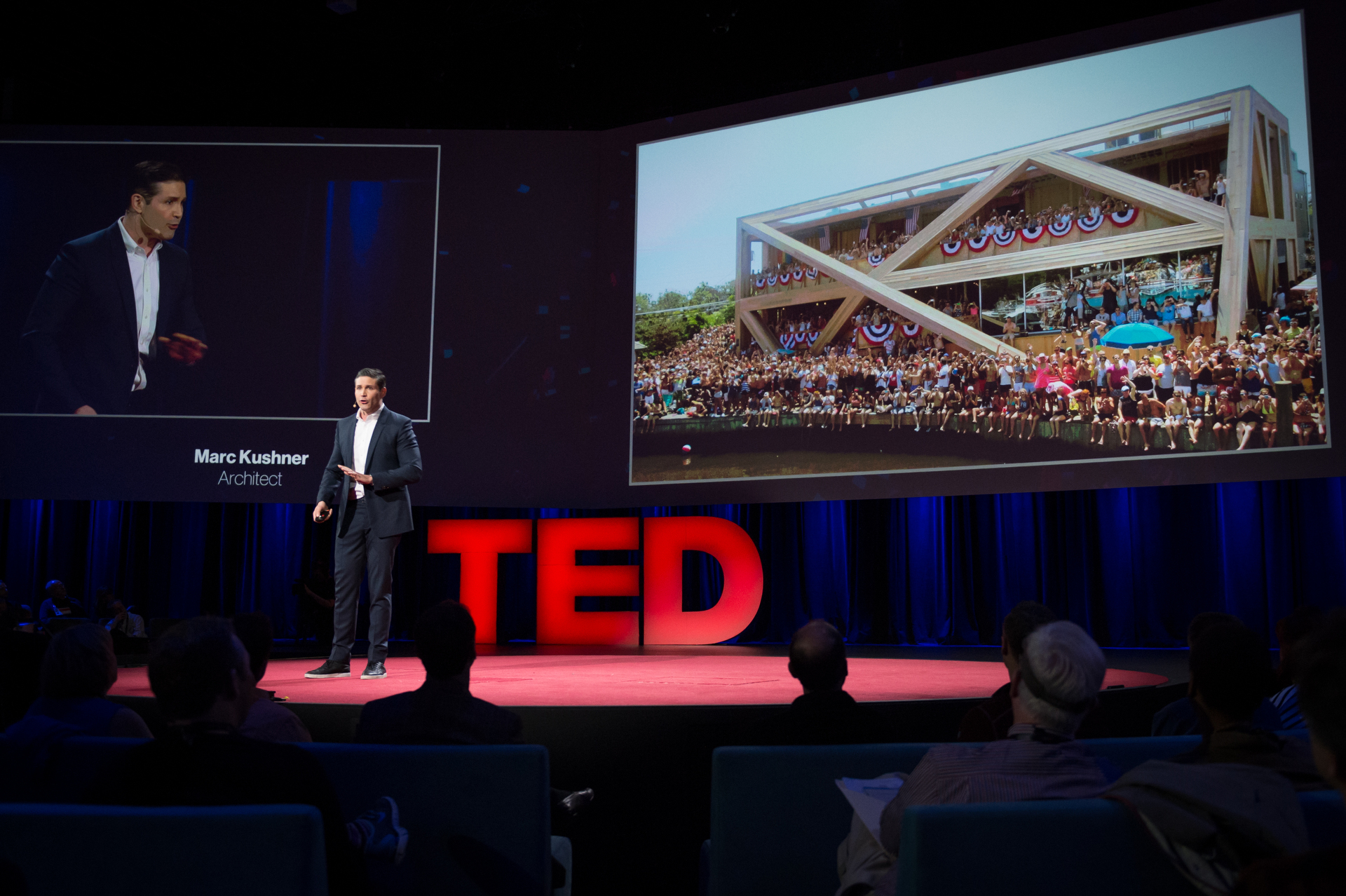“Architecture is shaping our lives in ways we don’t even realize,” says architect Marc Kushner in his talk at TED2014. Co-founder of Architizer, an online catalog of architecture projects worldwide, Kushner is dedicated to connecting people with the structures in which they spend their lives.
Structures can inspire feelings like strength and power and stability, Kushner says, but they can also inspire discomfort, isolation, and — in some cases — public outrage. “Building things is terrifying,” he says, “it’s expensive, it takes a long time, and it’s very complicated.”
Fear of negative public perception of their projects can stop architects from taking risks, Kushner says, from innovating, from making buildings that deviate from the norm. “The people who build things — developers and governments — are naturally afraid of innovation; they would rather just use those forms they know you’ll respond to,” he says — which is why so many firms defer to bland building types.
This doesn’t mean that there are no architects in the world taking risks and expanding their craft. Right now, architects all over the world are drawing inspiration from technology, science and our changing world, like those behind the Seattle Central Library, a building inspired by new-media consumption, or those behind a Miami Beach parking garage that doubles as a community space for yoga classes, events, even weddings.
“Architecture works on the principle of a pendulum,” Kushner says. “On the one side is innovation, and architects are constantly pushing for new technologies, new types, new solutions to problems.” On the other, he says, is time-trusted symbols — beautiful but safe designs that have existed since nearly the beginning of architectural history.
This pendulum settled in the middle in 1997, Kushner says, when Frank Gehry revealed the Guggenheim Museum Bilbao in Spain. “This building fundamentally changes the world’s relationship to architecture,” Kushner says. “Tourism in Bilbao increased by 25,000 percent after this building was completed … [This was] a rare moment when critics, academics and general public were completely united.”
Right then, something happened that seemingly had never happened before: Thanks to the galvanizing force of new media, radical architecture became associated with pop culture. Gehry was a guest star on The Simpsons. People clamored for a Gehry in their town. Gehry’s designs were built all over the globe.
Without open and expanding media, this blast of public attraction to shocking designs would hardly be possible, says Kushner. But where once, you only had access to buildings to which you could walk, people can now see designs thousands of miles away with a click of a mouse or a scroll of an Instagram feed. “We are living on the verge of the greatest revolution in architecture since the invention of steel,” Kushner says. “It’s a media revolution.”
In the age of the smartphone, Kushner says, “The building becomes disembodied from the site … The speed of communication has finally caught up to the speed of architecture.”
This came to life for him when his firm started to plan a new design to replace a building that had burned down on Fire Island in New York. “We proposed a building that was audacious, that was different,” he says, “something the community had never seen before.” As plans moved forward, his client and his co-designers were apprehensive, all worried the building would be rejected by the community. “So we created a series of photorealistic renderings,” Kushner says, “and we put them on Facebook, and we put them onto Instagram … so when it was built, and the rendering looked exactly like the finished product, it was already a part of the community.”
Instagram photos and Facebook comments gave the public ownership of the building, Kusher says: “It ceased to be an edifice and became media … Because digital media hasn’t just changed the relationship between all of us, it’s changed the relationship between us and buildings.”
Digital media has made almost everything about architecture change, Kushner says. “We don’t need the Greeks to tell us about architecture, we can tell each other about architecture.” Because, in the end, “Buildings don’t just reflect our society, they shape our society.”

Comments (5)
Pingback: Architecture Can! - 皇冠新2官网
Pingback: What will blow our minds in the *next* 30 years? #TED2014 #Marketingthema | www.Marketing-Thema.com
Pingback: At TED Conference: Kahane assassin’s son, Toscanini’s pants and other Jewish moments | The Chronicles
Pingback: "You need to know someone is looking in order to publicly tantrum" – dsgnster